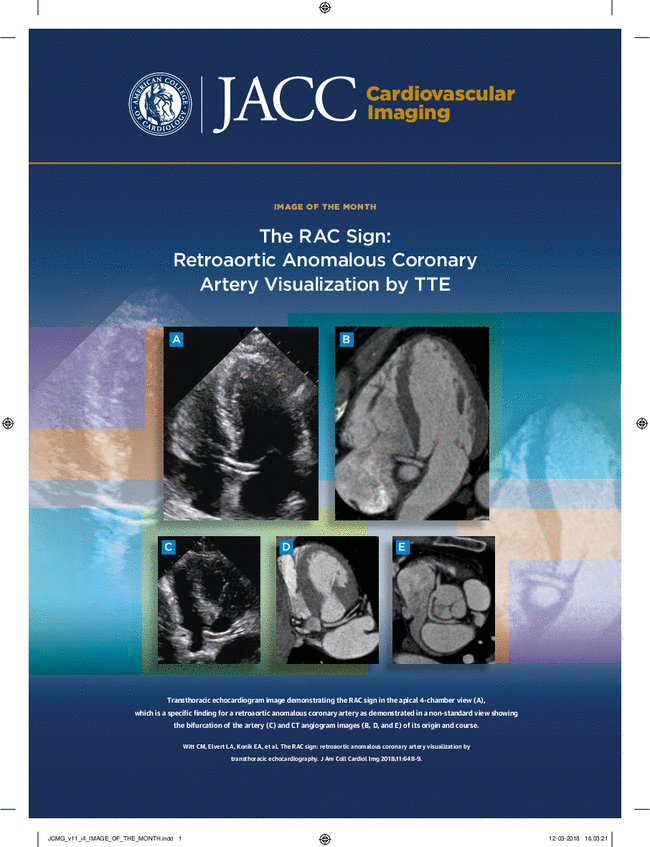Predictors for Vulnerable Plaque in Functionally Significant Lesions
IF 12.8
1区 医学
Q1 CARDIAC & CARDIOVASCULAR SYSTEMS
引用次数: 0
Abstract
Background
Vulnerable plaque presents prognostic implications in addition to functional significance.
Objectives
The aim of this study was to identify relevant features of vulnerable plaque in functionally significant lesions.
Methods
In this multicenter, prospective study conducted across 5 countries, including patients who had invasive fractional flow reserve (FFR) ≤0.80, a total of 95 patients with available pullback pressure gradient (PPG) and plaque analysis on coronary computed tomographic angiography and optical coherence tomography were analyzed. Vulnerable plaque was defined as the presence of plaque rupture or thin-cap fibroatheroma on optical coherence tomography. Among the 25 clinical characteristics, invasive angiographic findings, physiological indexes, and coronary computed tomographic angiographic findings, significant predictors of vulnerable plaque were identified.
Results
Mean percentage diameter stenosis, FFR, and PPG were 77.8% ± 14.6%, 0.66 ± 0.13, and 0.65 ± 0.13, respectively. Vulnerable plaque was present in 53 lesions (55.8%). PPG and FFR were identified as significant predictors of vulnerable plaque (P < 0.05 for all). PPG >0.65 and FFR ≤0.70 were significantly related to a higher probability of vulnerable plaque after adjustment for each other (OR: 6.75 [95% CI: 2.39-19.1]; P < 0.001] for PPG >0.65; OR: 4.61 [95% CI: 1.66-12.8]; P = 0.003 for FFR ≤0.70). When categorizing lesions according to combined PPG >0.65 and FFR ≤0.70, the prevalence of vulnerable plaque was 20.0%, 57.1%, 66.7%, and 88.2% in the order of PPG ≤0.65 and FFR >0.70, PPG ≤0.65 and FFR ≤0.70, PPG >0.65 and FFR >0.70, and PPG >0.65 and FFR ≤0.70 (P for trend < 0.001), respectively.
Conclusions
Among low-FFR lesions, the presence of vulnerable plaque can be predicted by PPG combined with FFR without additional anatomical or plaque characteristics. (Precise Percutaneous Coronary Intervention Plan [P3] Study; NCT03782688)
功能性病变中易受损斑块的预测因素
易损斑块除了具有功能意义外,还对预后有影响。本研究旨在确定功能性病变中易受损斑块的相关特征。在这项横跨 5 个国家的多中心前瞻性研究中,包括侵入性分数血流储备(FFR)≤0.80 的患者,共分析了 95 名有回拉压力梯度(PPG)和冠状动脉计算机断层扫描血管成像及光学相干断层扫描斑块分析的患者。易损斑块的定义是在光学相干断层扫描中出现斑块破裂或薄帽纤维血管瘤。在 25 项临床特征、有创血管造影结果、生理指标和冠状动脉计算机断层扫描血管造影结果中,确定了易损斑块的重要预测因素。平均直径狭窄百分比、FFR和PPG分别为77.8%±14.6%、0.66±0.13和0.65±0.13。53个病变(55.8%)存在易损斑块。PPG 和 FFR 被确定为易损斑块的重要预测因子(均为 0.05)。经相互调整后,PPG >0.65 和 FFR ≤0.70 与较高的易损斑块概率显著相关(PPG >0.65 OR:6.75 [95% CI:2.39-19.1];0.001];FFR ≤0.70 OR:4.61 [95% CI:2.39-19.1];0.001]):4.61[95%CI:1.66-12.8];FFR ≤0.70:0.003)。如果根据合并的 PPG >0.65 和 FFR ≤0.70 对病变进行分类,易损斑块的发生率依次为 PPG ≤0.65 和 FFR >0.70、PPG ≤0.65 和 FFR ≤0.70、PPG >0.65 和 FFR >0.70、PPG >0.65 和 FFR ≤0.70,分别为 20.0%、57.1%、66.7% 和 88.2%(趋势 < 0.001)。在低FFR病变中,PPG结合FFR可预测是否存在易损斑块,而无需额外的解剖或斑块特征。(精确经皮冠状动脉介入计划 [P3] 研究;)
本文章由计算机程序翻译,如有差异,请以英文原文为准。
求助全文
约1分钟内获得全文
求助全文
来源期刊

JACC. Cardiovascular imaging
CARDIAC & CARDIOVASCULAR SYSTEMS-RADIOLOGY, NUCLEAR MEDICINE & MEDICAL IMAGING
CiteScore
24.90
自引率
5.70%
发文量
330
审稿时长
4-8 weeks
期刊介绍:
JACC: Cardiovascular Imaging, part of the prestigious Journal of the American College of Cardiology (JACC) family, offers readers a comprehensive perspective on all aspects of cardiovascular imaging. This specialist journal covers original clinical research on both non-invasive and invasive imaging techniques, including echocardiography, CT, CMR, nuclear, optical imaging, and cine-angiography.
JACC. Cardiovascular imaging highlights advances in basic science and molecular imaging that are expected to significantly impact clinical practice in the next decade. This influence encompasses improvements in diagnostic performance, enhanced understanding of the pathogenetic basis of diseases, and advancements in therapy.
In addition to cutting-edge research,the content of JACC: Cardiovascular Imaging emphasizes practical aspects for the practicing cardiologist, including advocacy and practice management.The journal also features state-of-the-art reviews, ensuring a well-rounded and insightful resource for professionals in the field of cardiovascular imaging.
 求助内容:
求助内容: 应助结果提醒方式:
应助结果提醒方式:


